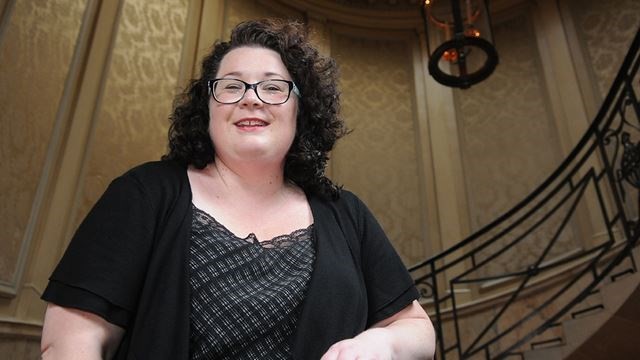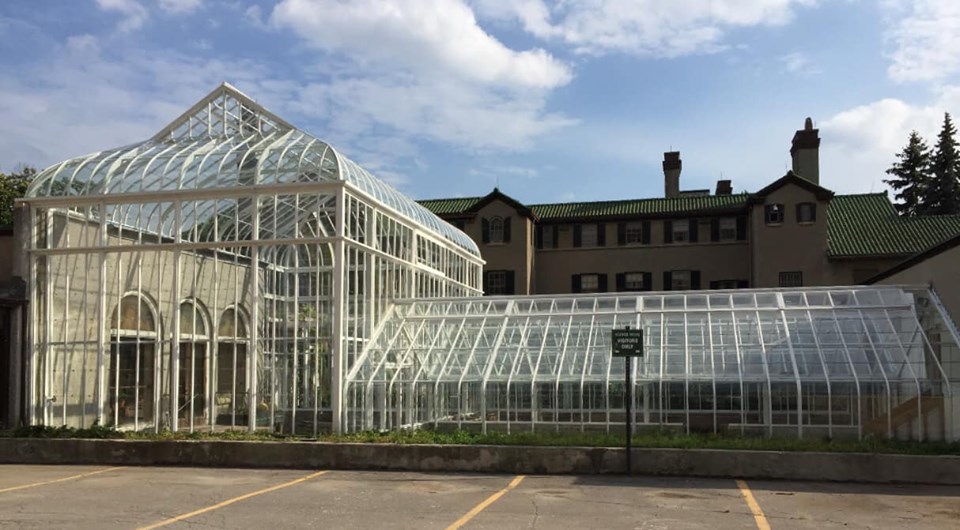GUEST SPEAKER:

Introduced by our very own Rhonda Stewart (also a volunteer at Parkwood), Samantha George is the curator at Parkwood Estate in Oshawa, Ontario, once the home of auto baron R.S. ‘Sam’ McLaughlin and his family, since July 2000. Since then, she’s spent almost every day, and some nights, at Parkwood, doing a myriad of duties that include everything from researching questions visitors ask tour guides, to educating those guides, to working with volunteers, to researching the family, the estate and the time period to overseeing the many TV, movie and commercial film crews that shoot at the national historic site to writing grant applications. She organizes a wide range of social programs, from a culinary club to dining etiquette programs to basement tours. She is a Graduate of York University, majoring in history and anthropology and also has a degree in Museum Studies from Algonquin College. She is a Board member of Culinary Historians of Canada since 2015. She is on the membership committee of Attractions Ontario, a fully licensed Zumba Instructor and has her own Appraisal business
Parkwood is extremely fortunate in that they have not had to source or collect artifacts for their collection. When the Estate became a National Historic Site, the house was full of items that belonged to the McLaughlin Family when they lived here. As the estate is now over 100 years old, signs of time, gravity and wear and tear have begun to emerge. Although quite an extensive and expensive process, in order to properly preserve our artifacts, they attempt to conserve the collections, architecture and heritage assets of Parkwood through the careful work of trained conservators.
 This year, Samantha took us through the $1.2 million restoration project of the now famous greenhouses. They used as much of the original material as possible. This project has been nominated for a Prince of Wales conservation award. The original George Tanaka drawings showed where everything was to be and the Durham College horticultural students made the greenhouses a Lab and greatly assisted with the placement of items, as they were originally, in those drawings. Parkwood is thrilled to have learned on May 6, that the greenhouse complex conservation project has been shortlisted for the Cornerstone Award in Transformative Projects, specifically for architectural heritage.
This year, Samantha took us through the $1.2 million restoration project of the now famous greenhouses. They used as much of the original material as possible. This project has been nominated for a Prince of Wales conservation award. The original George Tanaka drawings showed where everything was to be and the Durham College horticultural students made the greenhouses a Lab and greatly assisted with the placement of items, as they were originally, in those drawings. Parkwood is thrilled to have learned on May 6, that the greenhouse complex conservation project has been shortlisted for the Cornerstone Award in Transformative Projects, specifically for architectural heritage.
In addition, Flora, the statue, is the Pond House, has been restored. Parkwood has over 100 volunteers and many of them assist with restoring .
Natalie, a conservator from the Sir Sandford Fleming Conservation program has been volunteering numerous hours to conserve our anaglypta wallpaper located at the back staircase. As many of you know, we completed Part A of Stage II of the HVAC Retrofit ($1.8m to date), adding central air and humidification to the Art Deco Bedroom Suite, the Art Gallery and part of the third floor. Using closet spaces and the fireplace flues to run the duct work, etc. to ensure the work did not compete with or destroy our original finishes, construction crews negotiating the stairway with fan belts, and piping contributed to some of the wear and tear the natural aging process of the anaglypta has seen over the last 94 years. She has applied syringes filled with adhesive to consolidate some flaking that has occurred on the anaglypta around a window frame. This damage, and areas of loss, has been sustained over the years, due to an exposure to moisture, accumulative damage simply due to opening and closing windows for approximately a century. Once the adhesive is dried, the cracks will be flattened out with the use of a heated spatula which will relax the painted surface of the anaglypta ( the pink colour). Natalie will fill the areas of loss with a home-made paste, a recipe that consists of paper fibres and methyl cellulose adhesive, creating the same texture and density of the surrounding wallpaper. The walls are then cleaned with a 90 : 9 : 1 solution of water, mineral spirits and orvus paste, followed by a rinse. Once dry, Natalie will colour match to the pink walls and infill the areas that have been consolidated.
They also look at repairs to roofs, windows, wiring, fire, and safety systems. They improve temperature, humidity levels and air quality, control light and UV. They intervene with artifacts and architectural finishes as little as possible, preserving them in their current situations and conditions. When they need to intervene, they conserve, treating room finishes, painting and artwork, furniture, carpets, fabrics and lighting with minimal measures without altering the historic integrity of the artifact.
The most valuable items in the house are the paintings of Colonel Sam, Adelaide and the 5 daughters , in the dining room.
Parkwood’s burn time is 17 minutes and the Fire Dept has been told that the paintings must be the first items to be saved. The portraits need restoring and will be done over a period of one year. Other original paintings are now in Art Galleries across Canada to preserve them. Paul Peel’s After The Bath is at AGO and the McMichael Gallery has many McLaughlin collection items from the Group of Seven.
Floors have been rebuffed.
The carpet on the circular staircase, originally installed in 1930, and made in Scotland. The loom, after its use, was ordered destroyed so that no duplicate rug could be made. They are now working to conserve the rug.
In Samantha’s words, they want Parkwood to be left “as if the family just left, and were coming back any minute”
Parkwood was used as a set in the Handmaids Tale (Episode 6). Money from this is being used for many restorative items.
History Channel, CNN, Hulu, Netflix all use Parkwood in many films. Be sure to watch the History Channel’s “100 days to Victory”. As part of her Museum Morsels program, Samatha and her volunteers were able to prepare the meals for scenes when Churchill met with Eiesnhower at Chartwell. Over 15 productions will be shot this summer alone. Parkwood has become very much in demand by the film industry. Samantha works with the Directors Guild to ensure that the words “preserve and conserve“ will be the norm at Parkwood.
Samantha came across war poetry in many of the books at Parkwood. On 11/11/ 2018, they held a war poetry reading at Parkwood.
Thanks to TD Bank and the Durham Master Gardeners, the White Garden has been restored to look like the original.
Samantha noted that there re 15,000 artefacts on display at Parkwood and 15,000 more on storage. For example, The McLaughlin Car Club will be donating many of the GM Car catalogues which will be digitized for preservation.
This year, Parkwood will have the Gus Brown Golf Tournament at the Oshawa Golf Club in August and also the Gala in September.
She has started a seed preservation program as well so that flowers and vegetables, originally grown at Parkwood , can be on display in the same gardens again.
The 3rd floor servants’ quarters will be open for view soon as will the kitchen, for all to see.
Samantha George was thanked by incoming Vice President Sue MacKinnon.
Be sure to follow Parkwood Estate on Facebook and Twitter . Lots of timely posts and pictures to see.
IF YOU CAN’T MAKE IT, MAKE UP: Go online at www.rotary.org go to the club locator and find a club or clubs near your destination. Or you can add the free App Rotary Club Locator to your phone for instant look up of any club in the world. Please mail or fax your make-ups to Secretary Robbie Larocque, or give your make-up card to the attendance/registration officer at the next club meeting.
